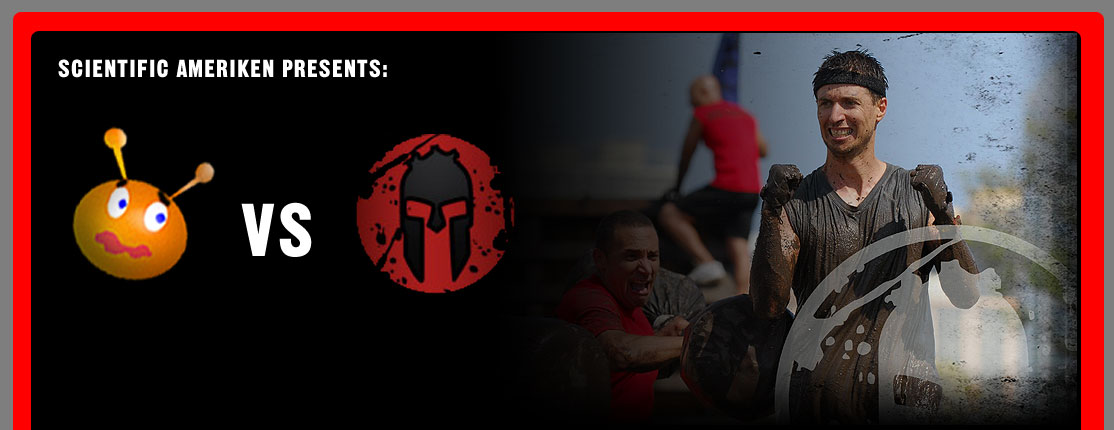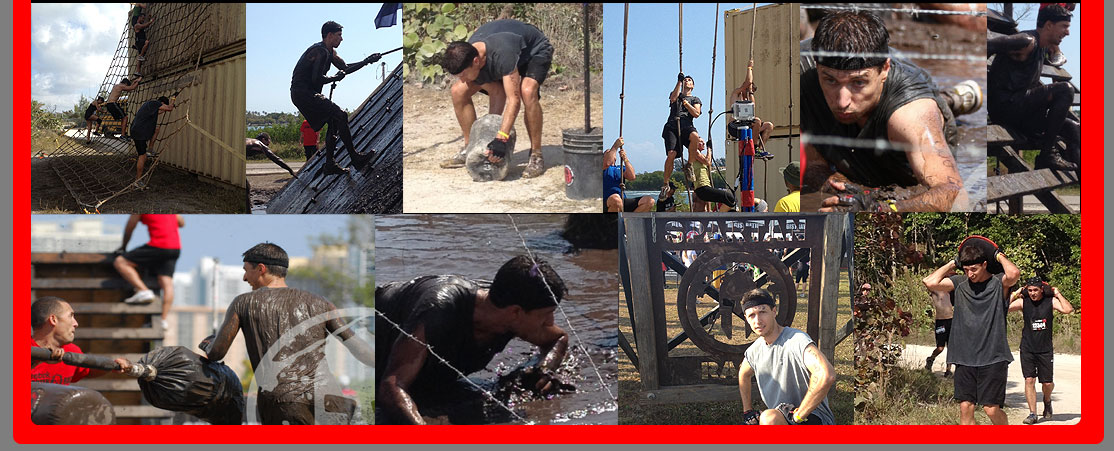
The purpose of this experiment is to test the ability of the human body to complete an extreme test of physical endurance and strength when allowed time for training is minimal. The chosen test is the Miami Super Spartan, a grueling 8.3 miles wilderness track featuring over 20 obstacles. Training schedule allows for only one day a week of all out training and during the week as many burpees (push-up followed by standing and then jumping) or jungle gym pull-ups one year old Brandon will allow - which is not many.
The distance and range of obstacles in the Spartan race calls for not only endurance but also power and strength endurance. The hypothesis of this experiment that a training regiment geared towards running and varied high rep body weight exercises will provided the necessary conditioning to succeed in this race.
Training regiment begins every Sunday starting 7 weeks before the event. Training starts with a 2.5 mile run followed by maximal: burpees in 1 minute, box jumps in 30 s, inclined pull-ups in 30s, sit-ups in 60s, two handed hang until fall, jumps in 30s, 4-step stair climbs in 60s, inclined push-ups in 30s, 10ft pole climb, and 10ft hand-bar walk. The session is ended with the return 2.5 mile run. During the week small sessions of burpees, push-ups and pull-ups were allowed.
Scientific AmeriKen considers the efforts of the day to be a success as was the effectiveness of the limited training regiment. Although it would be interesting to see if an expanded training regiment would net substantially improve results, a repeat of this ordeal is highly unlikely and future experimentation will likely occur in nice little 5K non-obstacle races. Additionally, one challenge left out of the results proved to be the most difficult, as removing all the mud seemed to take days. Finally, Scientific AmeriKen would also like to thank fellow Spartan competitors whose teamwork, such as helping a cramped up SciAmeriKen over 8 foot walls, helped to overcome this challenging race. Questions or Comments? Talk at ScienceChatForum.com!
|
||||||||||||||||||||||||||||||||||||||||||||||||||

 Special thanks to Claudio Recinos, 61, for his contributions as a training partner. Over the course of 6 weeks of training, significant improvements were seen in all exercises. Average mile time seemed to have hit a plateau around 8 minutes (figure right) while other test such as sit-ups, push-ups and repetative jumps seem to have room for further development (figure below). On the morning of the race an attempt to gain an edge on the field by ingesting fresh squeezed beet juice backfired as Scientific AmeriKen could not keep these contents inside of his stomach. This is suspected to have induced dehydration that may have led to calf cramps starting around mile 6. Despite the adversity Scientific AmeriKen successfully completed the Spartan with a final time of 2 hours 34 minutes. Additionally, 19 of the 20 obstacles were successfully completed (table below) as was the 30 burpee penalty for the failed obstacle.
Special thanks to Claudio Recinos, 61, for his contributions as a training partner. Over the course of 6 weeks of training, significant improvements were seen in all exercises. Average mile time seemed to have hit a plateau around 8 minutes (figure right) while other test such as sit-ups, push-ups and repetative jumps seem to have room for further development (figure below). On the morning of the race an attempt to gain an edge on the field by ingesting fresh squeezed beet juice backfired as Scientific AmeriKen could not keep these contents inside of his stomach. This is suspected to have induced dehydration that may have led to calf cramps starting around mile 6. Despite the adversity Scientific AmeriKen successfully completed the Spartan with a final time of 2 hours 34 minutes. Additionally, 19 of the 20 obstacles were successfully completed (table below) as was the 30 burpee penalty for the failed obstacle.
